Internet access at ETH
The Internet first came to Switzerland around 30 years ago. It was called SWITCHlan, it linked the Swiss universities to one another and was intended exclusively for the research world. SWITCH therefore became the first Internet service provider in Switzerland. How did this development come about and to what extent has the Internet changed since then?
Initial ideas
The history of the Internet begins earlier than you think: In the first half of the 20th century, some scientists and researchers had some ideas and concepts that were very similar to today’s Internet. In 1934, Paul Otlet, founder of modern documentation science, outlined networks and processes that looked very modern. He had visions for video conferencing and devices resembling tablets from the 21st century (see picture).
Otlet sketched out possibilities for transferring information without paper – by audio transmission, telephone or «radiotelephotography», a kind of image transmission by radio.
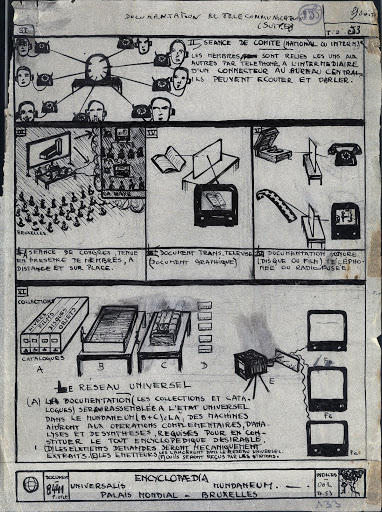
Another such pioneer was Doug Engelbart, an American computer technician and inventor. In 1945 he had the idea for «Memex», a fictitious compact analogue computer. This could be installed in a desk and operated on the surface with different user interfaces and a keyboard.
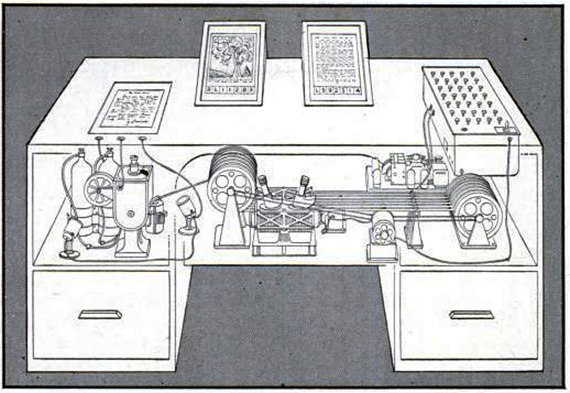
Before 1973
Interconnecting computers
Various decentralised computer networks were developed. They formed the basis for today’s Internet and contained fundamental aspects that can still be found in today’s technology.
1969: The «ARPAnet» was put into operation for the very first time. It was a network of computers in four different locations: University of California, Los Angeles (UCLA), University of California, Santa Barbara (UCSB), Stanford Research Institute (SRI) and University of Utah. On 29 October 1969, the first data exchange took place between the computers of UCLA and SRI. This computer network with four nodes is regarded as the precursor of today’s Internet.
1971: «CYCLADES» was created in France under the direction of Louis Pouzin. Inspired by ARPAnet, this decentralised network also contained key technologies that were fundamental to the development of today’s Internet. It was operational in 1974.
Around the same time, Ethernet was invented at the Xerox Palo Alto Research Center. Ethernet is still used today for local, wire-based data communication.
1973
The birth of the internet: A network of networks
Vinton G. Cerf and Robert E. Kahn developed an early version of TCP in 1973 and 1974 to connect networks. TCP (Transmission Control Protocol) is a network protocol that defines the way in which data is exchanged between network components.
At that time, however, the Internet was intended almost exclusively for the research world. Nobody thought about extending and commercialising the Internet globally. This however happened in the 1990s.
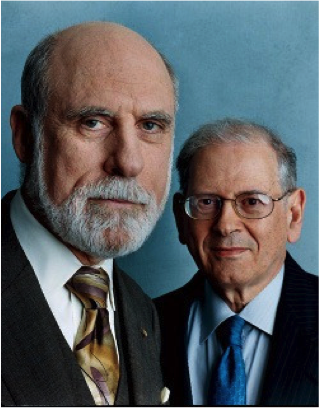
1987
The Top-Level-Domain of Switzerland «.ch» is born
The «father» of this was ETH-Professor Dr. Bernhard Plattner. On 20 May, 1987, he instructed the responsible «Internet Assigned Numbers Authority» (IANA) to record the «.ch» domain in the «Domain Name System» (DNS).
The first three «.ch» domain names
- cern.ch
- switch.ch
- ethz.ch
Some of the computers of ETH Zurich, EPFL and Cern became part of the international network. The sites were connected with a 2 Mbit/s line. This means 20 May 1987 marks the birth of the Swiss Internet.
Shortly afterwards, Bernhard Plattner became temporary managing director of SWITCH and transferred the «.ch» domain to the foundation. Since then, SWITCH was not only responsible for setting up a Swiss university and research network, but has also been responsible for administering the «.ch» domain.

1989
Birth of the university network SWITCHlan with a maximum bandwidth of 128 Kbit/s
SWITCH connected the universities with one another and then opened up the network to companies that cooperate with universities in research projects. This means it was also the first Internet Service Provider (ISP) in Switzerland.
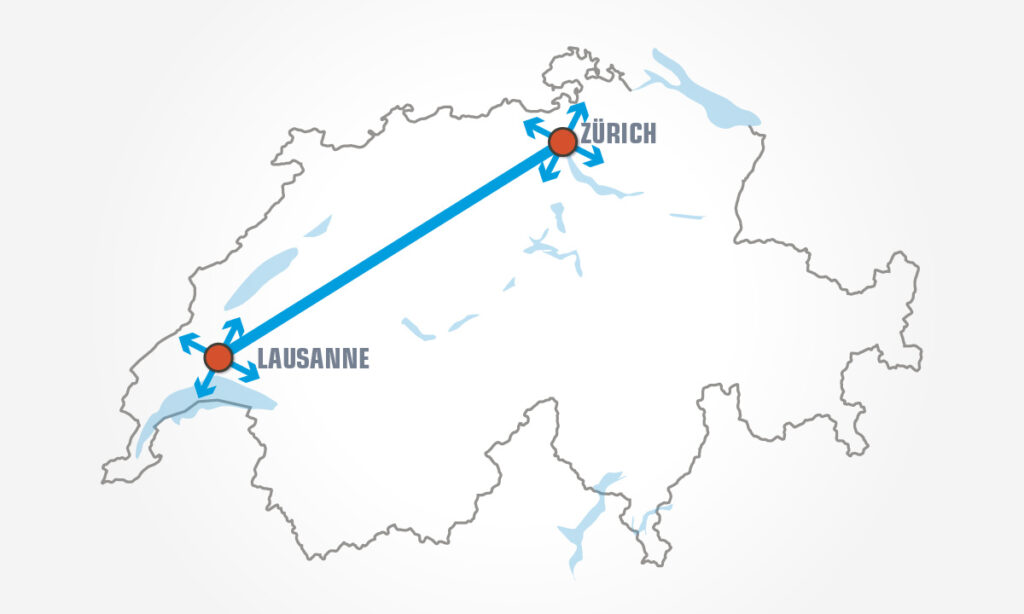
Also in 1989: Tim Berners-Lee developed the World Wide Web at CERN.
1990
Zurich, 23 February, 1990– Since the day before, the Swiss colleges and universities had been connected to the so-called Internet. This was the US research network of the National Science Foundation NSF. The connection was made possible thanks to a collaboration with the Institut National de Recherche en Informatique et en Automatique INRIA in Valbonne near Nice in southern France. This link was synonymous with Switzerland’s participation in the global research network. A leased line ran from Zurich to Nice and then on to Princeton in the USA. (fictional newspaper article, SWITCH Journal October 2012)
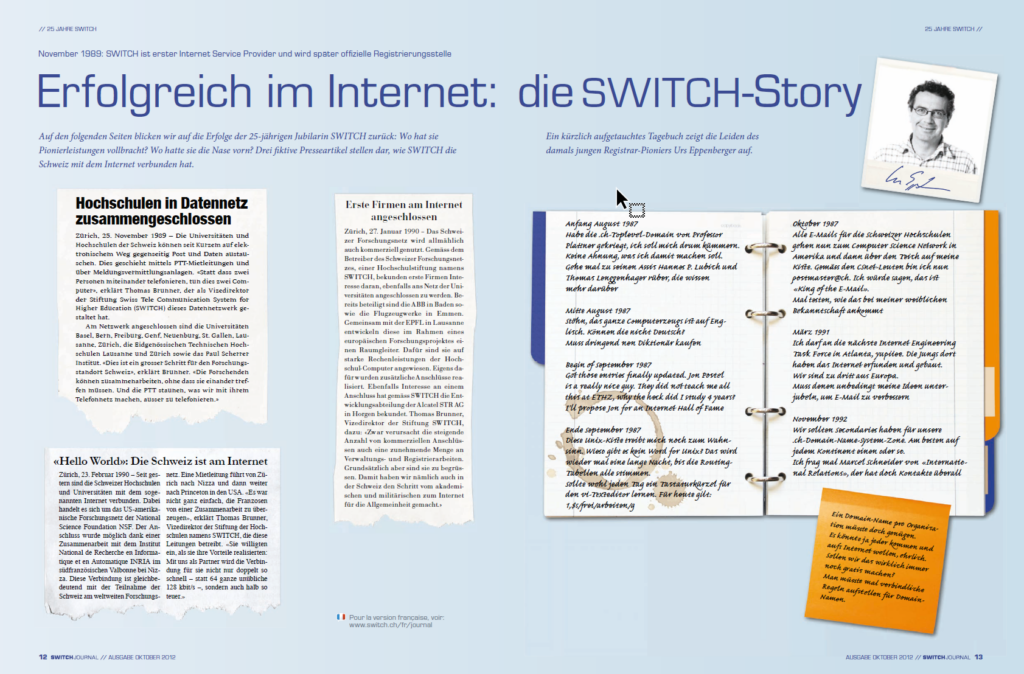
This fictional newspaper article was only true to a certain extent. The afore-mentioned connection only referred to the email service: In the 80s and 90s there were many different email systems. The few standardised systems also used various different forms of addressing and representation. This meant gateways had to be set up between different systems, whose task it was to convert the emails for the intended system.
Swiss universities used email systems based on the X.400 standards, while universities in the USA worked with systems based on the RFC 822 et. al. standard, which is used worldwide today.
On 22 February, 1990, 30 years ago, the email systems of Swiss universities and the Internet-based email systems of the USA (and a few other countries) were connected via a gateway. From then on it was possible to exchange emails between Swiss universities and American universities. This meant it was no longer necessary to send letters or fax messages.
This was made possible by a 64kbit/s line from Zurich (near SWITCH) to the French research institution INRIA in Sophia Antipolis near Nice. Emails in X.400 format were sent and received via this location. INRIA operated the gateway that performed the conversion from X.400 to RFC 822 and vice versa. A 128kbit/s line was operated from INRIA to the University of Princeton in the USA, which was used to transfer email data from/to Switzerland, but also data from/to France.
However, the connection to the US-American Internet was not established with this line. At that time, there were still very few websites. The handful of websites in the USA could not be reached via this connection. As the Internet was still in its infancy in this country, it was possible to count the requests for a domain name on one hand. So far, only Swiss universities and some large companies have had Internet access. There was exactly one domain name per company; and according to global allocation rules, private individuals were not even intended as holders.
1993
NCSA Mosaic: The first browser for normal users, which contained embedded elements such as graphics or interactive elements in addition to text, was developed. At the end of 1993, there were 2 million copies of NCSA Mosaic in circulation.
2003
The World Wide Web was democratised: Previously, users could only access data, but now everyone was able to make data available via the Internet.
Today
The core of the Internet network is still almost the same today as it was 40 years ago. Major innovations have «only» been made in the area of applications and services of the Internet. Problems like spam, phishing, cyber-bullying or the DarkNet were not an issue in the early days of the Internet. Nowadays, the Internet changes every few seconds. Who knows what’s in store for us.
Text and research: Francine Tobler
Information based on an interview with Professor Bernhard Plattner
More
- A pioneer of the Swiss internet to retire (ETH News)
Contact: Sabine Hoffmann, Head of PR & Communications, IT Services


